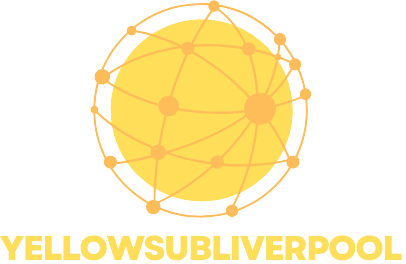Table of Contents
ToggleIn a world where information is just a click away, digital resources have become the superheroes of everyday life. They swoop in to save the day, making learning, working, and even entertaining a breeze. Gone are the days of dusty encyclopedias and endless trips to the library. Now, it’s all about streaming, downloading, and clicking your way to knowledge and fun.
Overview of Digital Resources
Digital resources simplify access to information, transforming how people learn and interact. They encompass a wide range of online materials that enhance educational and professional environments.
Definition of Digital Resources
Digital resources consist of various online materials created or stored in digital formats. These include documents, multimedia files, and databases accessible via the internet. Educators, students, and professionals utilize digital resources to improve efficiency and facilitate information sharing. Accessing content through digital channels reduces reliance on physical materials, streamlining workflows and enhancing learning experiences.
Types of Digital Resources
Digital resources come in numerous forms, each serving unique purposes.
- E-books offer portable, searchable access to a vast array of texts.
- Online courses provide structured learning platforms across diverse subjects.
- Podcasts deliver informative audio content, engaging listeners on-the-go.
- Websites host articles, videos, and interactive elements that inform and entertain.
- Databases collect and organize extensive information for research and reference.
- Social media platforms facilitate networking, collaboration, and knowledge sharing.
These resource types showcase the versatility of digital platforms in meeting various needs.
Benefits of Using Digital Resources
Digital resources offer significant advantages, transforming how people access information, learn, and engage with content. Many benefits enhance productivity and user experience.
Accessibility and Convenience
Accessing digital resources occurs anytime and anywhere, fostering a flexible learning and working environment. Online materials range from e-books to videos, allowing users to retrieve information quickly. Instant download options also eliminate the need for physical trips to libraries, streamlining research processes. Digital tools support various devices, ensuring compatibility with smartphones, tablets, and computers. Users navigate through well-organized websites and platforms, enhancing their ability to locate specific information. As a result, reliance on traditional resources diminishes.
Cost-Effectiveness
Digital resources often reduce educational and professional costs. Availability of free online courses offers learners an effective way to gain knowledge without tuition fees. E-books frequently cost less than print versions, allowing users to save on materials. Many online platforms provide free access to articles, journals, and multimedia, further lowering expenses. Subscription models for services like streaming and membership sites often yield more resources for lower overall costs compared to physical alternatives. Overall, digital tools prioritize affordability, making information accessible to a wider audience.
Challenges in Utilizing Digital Resources
Utilizing digital resources comes with several challenges that can hinder efficiency and access.
Digital Divide
The digital divide represents the gap between those with easy access to digital technologies and those without. Approximately 25% of Americans lack reliable internet access, impacting their ability to use online resources effectively. Communities in rural areas often face barriers, including limited infrastructure and financial constraints. Disparities in technology literacy further complicate this issue, preventing equitable access. Without addressing these inequalities, the valuable advantages of digital resources remain out of reach for many individuals. Efforts to provide affordable internet and digital training programs could bridge this gap.
Information Overload
Information overload occurs when individuals encounter excessive amounts of data online. With thousands of websites and digital platforms, users may struggle to sift through content effectively. A study indicated that over 2 million blog posts are published daily, making it challenging to find reliable information. Users often experience confusion due to conflicting sources and excessive choices, leading to decision fatigue. Effective curation tools and strategies can help streamline access to relevant materials, promoting a more focused approach to information consumption. Prioritizing quality over quantity becomes essential in navigating this surplus of digital content.
Best Practices for Effective Use of Digital Resources
Effectively using digital resources requires key strategies that enhance accessibility and ensure quality. Users benefit from understanding how to navigate and utilize these tools wisely.
Evaluating Credibility
Evaluating the credibility of digital resources ensures information reliability. Verify the author’s qualifications and their expertise in the subject area. Analyze publication dates to confirm that the content is current and relevant. Check for citations and references; reputable sources often link to additional credible information. Consider the domain of the website. Educational (.edu) and government (.gov) sites generally provide trustworthy data. Prioritize peer-reviewed journals and established publishers to strengthen the reliability of the resources selected.
Organizing and Managing Resources
Organizing and managing digital resources promotes efficiency and ease of access. Create categorized folders on devices or cloud storage, grouping resources by topic or purpose. Utilize tags and keywords for simple retrieval, enhancing the searchability of materials. Establish a regular review process to weed out outdated or irrelevant content, keeping resources fresh and useful. Employ citation management tools to organize sources and streamline referencing for projects. Prioritizing a consistent naming convention for files simplifies locating specific documents, fostering a productive environment.
Future Trends in Digital Resources
Digital resources continue to transform in response to technological advancements and user preferences. Significant trends shape their future, impacting accessibility and utilization.
Emerging Technologies
Artificial intelligence enhances digital resources by personalizing user experiences through adaptive learning features. Blockchain technology adds security and transparency to digital transactions, particularly in educational platforms. Additionally, augmented reality and virtual reality create immersive learning environments, making complex concepts easier to comprehend. Internet of Things devices facilitate connectivity and data sharing across platforms, offering seamless access to resources anytime and anywhere. These technologies collectively redefine how users engage with digital content, emphasizing the importance of interactivity and relevance.
Evolving User Needs
User expectations evolve as digital resources become integral to daily life. Increased demand for on-demand learning and flexible work arrangements drives the creation of more tailored content. Users seek resources that fit specific learning styles, emphasizing interactive and multimedia elements, including videos and quizzes. Furthermore, mobile accessibility plays a crucial role, with individuals relying on smartphones and tablets for training and education. Accessibility features also gain importance, ensuring inclusivity for all users regardless of their abilities. Meeting these diverse needs shapes the development of digital resources, prioritizing personalized and accessible solutions.
Digital resources are reshaping how individuals access information and engage with the world. They offer unprecedented convenience and flexibility that traditional methods simply can’t match. As technology continues to advance, the potential for digital resources to enhance learning and productivity only grows.
However, addressing the challenges like the digital divide and information overload remains crucial. By implementing effective strategies for navigating this landscape, users can maximize the benefits of digital tools. The future promises even more innovative solutions tailored to diverse needs, making digital resources an essential component of modern life. Embracing these changes will empower users to thrive in an increasingly digital world.







